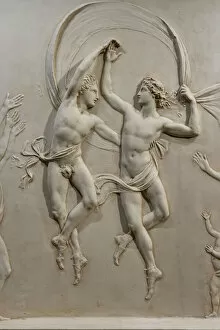Ballerino Collection
"Ballerino: A Timeless Art of Grace and Elegance" Step into the enchanting world of ballet, where dancers effortlessly glide across the stage
All Professionally Made to Order for Quick Shipping
"Ballerino: A Timeless Art of Grace and Elegance" Step into the enchanting world of ballet, where dancers effortlessly glide across the stage, captivating audiences with their exquisite movements. From classical masterpieces to modern interpretations, the art has mesmerized generations. In 1790, "Dance of Alcinous Children" was brought to life in plaster form. The intricate details showcased the beauty and precision that define this timeless dance style. Each delicate movement tells a story, evoking emotions that transcend time. The pochoir print "Karsavina" from 1914 captures a moment frozen in elegance. The graceful pose reflects the dedication and discipline required to become a true ballerino, and is through years of training and passion that dancers like Vaslav Nijinsky were able to bring Claude Debussy's masterpiece "L'Apres-Midi d'un Faune" to life on stage in 1912. From Cesare Negri's portrait as an Italian dancer in the 16th century to costume designs for characters like Triton or the Pageboy of Fairy Lilac from Sleeping Beauty, each element contributes to creating a visual feast for spectators. "How to dance the Alemanna" and "How to dance the capriola, " depicted in double pages from "Le Gratie d'Amore, " provide insights into techniques passed down through centuries. These historical references remind us that ballerinos have been perfecting their craft since ancient times. Plate 370 and Plate 369 showcase ballet actions captured on paper in collotype form during1885 – moments frozen forever but still resonating with energy today. They serve as reminders that even though time passes, ballet remains an ever-evolving art form. Ballerinos embody strength disguised as grace; they are athletes who defy gravity with every leap and pirouette. Their dedication is unwavering as they strive for perfection, pushing their bodies to the limits.





























